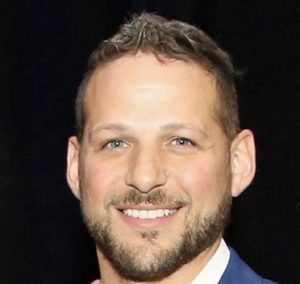October 3, 2022
By Daniel Press, OD, FCOVD
The mindset for providing myopia management services should be on reducing the rate of progression of myopia and not necessarily on the specific tools used. This mindset shifts the value focus from the expense/specialization of the materials used to the professional services and expertise involved in the care.

Should myopia management services be charged as a global fee? Most myopia management service fees have mirrored traditional contact lens fee structures. While the contact lens model can work well for many practices, how do you handle the options that are not contact lenses that are also effective in the fight against myopia progression now and in the future?
As the Greek philosopher Heraclitus said, “change is the only constant in life,” and setting fees for specialty care in myopia management can seem to be a constantly evolving process. There are many different models to use, and deciding on a fee structure should be individualized to the practice based on several factors. Those factors may include socioeconomic geography, third-party considerations, specific services provided, and chair costs, among others.
Using Contact Lenses as a Guide
There has been an evolution in providing professional myopia care in practice – from prescribing plus at near, to orthokeratology (OrthoK), specialty soft contact lenses, and low-dose atropine. OrthoK was approved by the U.S. FDA in 2002 for the temporary correction of myopia and was considered the most effective way to slow myopia progression, albeit as off-label from the FDA indication. Considering that OrthoK is a specialty contact lens associated with expert contact lens fitting skills, it followed that the vast majority of fees in the marketplace mirrored traditional specialty contact lens fees. Here we are 20 years later, and many of the fees for myopia services in the marketplace continue to mirror contact lens fees with levels based on the perceived complexity of the contact lens fit. Additionally, the majority of practices would charge a substantial year-one fee, with reduced fees in year two and beyond those fees closer to that of traditional contact lenses. This structure devalues the service beyond the first year. A child with progressive myopia deserves the same high-level care in the second year and beyond as they do during the first year.
A Shift to Fee-for-Service
The move to set global fees in myopia management often comes with a shift in mindset from fee-for-material to fee-for-service. There are many examples in health care for global fees for services, such as orthodontia, a commonly used analogy for OrthoK. Within optometry, vision therapy is an example of a fee-for-service treatment. Cost of goods are factored into fee setting, but they are not the primary determinant for final fees and are not a common discussion point with patients. In providing a specialty service, the emphasis of the discussion is on the outcome for the patient in question – an improved dental profile in orthodontia and improved visual abilities and quality of life for patients in vision therapy. The mindset for providing myopia management services should be on reducing the rate of progression of myopia and not necessarily on the specific tools used. This mindset shifts the value focus from the expense/specialization of the materials used to the professional services and expertise involved in the care.
The question then becomes how to structure global myopia management fees. Our practice has evolved to our current model in which the global fee includes all materials specific to myopia management and all professional services for the child for a period of one year, with the exception of vision therapy services. Before commencing the global myopia program, patients undergo a myopia evaluation, which is distinct from a routine eye examination. The details of that myopia evaluation are outlined here: Myopia Management in Action by Daniel J. Press, OD, and S. Barry Eiden, OD.
The global myopia program includes the starting treatment materials, whether contact lenses or atropine, and any other treatments added throughout the program period, defined as 12 months. The global myopia program is modeled after concierge medicine, in which a patient pays a physician in advance for unique access to their professional services without an intermediary, such as an insurance company.
Fees Include:
|
Potential Additional Fees:
3. Low-dose atropine will be prescribed in quantities sufficient for annual treatment. Any additional medication needed beyond the annual supply due to loss will be charged at the current pharmacy rate.
|
Myopia Management Program Graduation
When moving to a global fee that is charged annually, it is not uncommon to field questions regarding the length of treatment. Here is the specific wording used in our practice to address these questions:
The Myopia Management Program at Park Ridge Vision runs for a period of 12 months from each renewal period. The goal of the program is to reduce the progression of myopia during the formidable years of known myopia progression, which is typically from the age of diagnosis through the late teen years (18-20 years of age). Your doctor will work with you and your child to evaluate myopia progression at each visit. Graduation from the program will be recommended for children displaying stability of their myopia for a minimum of two consecutive years. Subsequent examinations will no longer qualify for progressive myopia treatment. A la carte fee for services and materials will resume with some of the charges eligible for medical or vision insurance coverage.
The global myopia program simplifies the complexities involved with the addition of treatment modalities throughout the year. The global myopia program includes treatments shown to be effective in the peer-reviewed literature and accessible to our practice. As of this writing, that includes OrthoK, specialty soft contact lenses, and low-dose atropine. The global fees can be easily adjusted as new treatments become available, such as spectacle lens options (not currently available in the U.S.), caffeine metabolite therapy, and low-level red light therapy.1,2 Specialty services typically involve a lower cost of goods sold. The median percentage of gross revenue for cost of goods sold in an optometric practice is estimated to be 29%.3 For the first half of 2022, the cost of goods sold for our myopia program was 15%, supporting its value for the practice along with the high value for patients in the program – a true win-win.
 |
Dr. Daniel Press is a 2007 graduate of the Pennsylvania College of Optometry and the owner and clinical director at Park Ridge Vision in suburban Chicago — a practice known for expertise in pediatric vision and vision therapy. Dr. Press is board certified in vision development and therapy by the College of Optometrists in Vision Development (COVD) and served as president of the organization from 2019-2021. Dr. Press is active in his academic pursuits, holding faculty positions at Indiana University of Optometry, Illinois College of Optometry, and Southern College of Optometry, and he has authored numerous peer-reviewed articles. |
References
- Trier K, Cui D, Ribel-Madsen S, Guggenheim J. Oral administration of caffeine metabolite 7-methylxanthine is associated with slowed myopia progression in Danish children. Br J Ophthalmol. Published online August 22, 2022 doi: 10.1136/bjo-2021-320920. Online ahead of print.
- Jiang Y, Zhu Z, Tan X, Kong X, Zhong H, Zhang J, Xiong R, Yuan Y, Zeng J, Morgan IG, He M. Effect of Repeated Low-Level Red-Light Therapy for Myopia Control in Children: A Multicenter Randomized Controlled Trial. Ophthalmology. 2022 May;129(5):509-519. doi: 10.1016/j.ophtha.2021.11.023. Epub 2021 Dec 1. PMID: 34863776.
- https://www.reviewob.com/metrics-to-manage-by-how-to-calculate-chair-cost-per-exam/













